While the process of driving a vehicle may sound by its nature sedentary, it can in fact lead to lower, middle or upper back pain.
Sitting in a constrained driving position for long periods, combined with the low-frequency vibrations associated with motoring, may eventually impact your back.
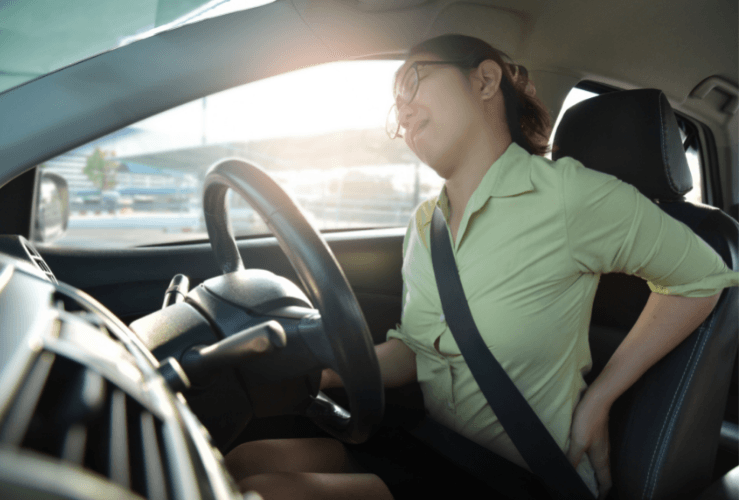
For some, back pain while driving is so unpleasant that they give up their vehicle altogether.
Thankfully, there are steps you can take to reduce or even eliminate the impact of driving on your back.
Here are some useful tips on how to stop back pain while driving.
What causes back pain?
Needless to say, the impact on your body from sitting in a stationary vehicle's driving seat is comparable to sitting on a chair at home.
Once in motion, however, your body has to deal with accelerations, declarations, and vertical vibrations throughout the body, while swaying from side to side.
According to research carried out in 1998 by the Universities of Aberdeen and Iowa, the human back has a natural resonant frequency of 5Hz, but this frequency is ‘excited’ by the process of driving, resulting in higher spinal loadings on the lower back. This can lead to postural discomfort, and increase the risk of back pain or even injury.
And the risk of lower back pain and sciatica is doubled for those who drive for a living compared to those who do not - according to a 2015 study by International Archives of Occupational and Environmental Health.
Aside from whole-body vibrations, the driver will also be using their feet for braking and accelerating (and using the clutch in manual vehicles) - which means their feet aren't available to stabilise the body.
The design of a driving seat and vehicle can also impact back health.
General causes of back pain
Below are the main causes of back pain, all of which can be exacerbated by long periods of driving.
- Bad posture
- Overuse of muscles and ligaments
- Trauma from a motoring accident
- Bad technique when lifting heavy objects
- Compression fractures
- Thoracic herniated disc
- Arthritis
- Fibromyalgia
- Spinal deformity
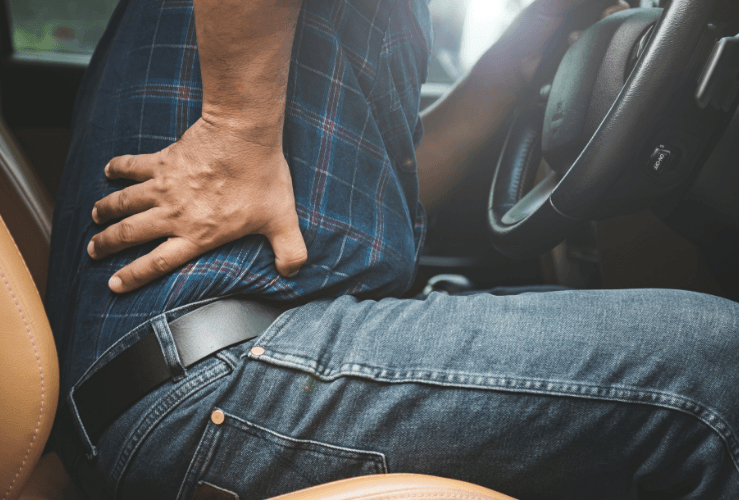
How to prevent back pain while driving?
Adjust your seat for comfort
Move your seat so it is close to the steering wheel - this will reduce the amount of work your shoulders, wrists, lumbar and neck have to do. This said, don't move the seat too close as this could be dangerous.
Ensure your knees are not higher than your hips, and adjust your seat to an angle of 100 to 110 degrees.
The back of your head and neck should be in a neutral position, with the headrest located in the middle of your head. Rest your shoulders a little behind your hips.
Support your lumbar when driving
Your lumbar spine is located in the lower region of your backbone.
When driving, keep your back centred against the seat back to maximise lumbar support.
Seats in many vehicles do not offer adequate lumbar support, so you may benefit from rolling up a jumper or t-shirt and placing it behind the small of your back. Who knew improving driving posture support could be so simple?
You can reduce the pressure on your hamstrings and lower back by driving with your knees a little higher than your hips. Remember that your neck, hips and back are all interconnected; when one moves, the others do too.
This is the best car seat position for lower back pain, as well as middle and upper back pain - and sciatica.
Grip the steering wheel at 9 o'clock and 3 o'clock
Researchers once stated that the best driving grip for those with back pain was 10 o'clock and 2 o'clock. Today, however, the consensus is that 9 o'clock and 3 o'clock is the optimum grip position - maximising safety in the event of airbag deployment.
Additionally, this grip means you can rest your elbows in the armrests (if fitted), which is especially good for reducing pain in the upper back.
Switch on 'seat heating' if you have it
Heat is a great way of increasing blood flow in muscles and around joints, which facilitates relaxation and nutrient flow - resulting in a lower risk of back pain.
Heat can also reduce the transmission of pain to your brain.
Don't have heated seats? You can buy heated seat covers online for as little as £25.
Activate cruise control
Cruise control permits you to place your feet on the floor of the vehicle for short periods, which means your weight is more evenly distributed and there's less pressure on your spine and musculature.
However, only use cruise control when it is safe to do so.
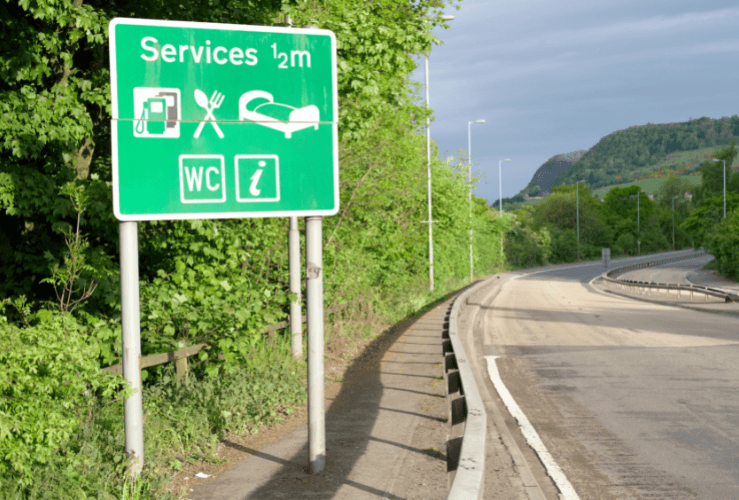
Take regular breaks from driving
Ideally, you should take a break from driving every 30 minutes.
When you sit in some positions for too long, your muscles can become stiff, potentially resulting in aches and spasms.
Even if you only stop for a few minutes, getting out of the vehicle and moving around will help keep pain at bay.
Naturally, you should ensure it is safe to pull over for such pit-stops.
For those who drive for a living, it may not be possible to take such regular breaks - but do ensure you take all your permitted rest periods. You may consider splitting your allotted break period into shorter breaks - if feasible.
At the very least aim to change the angle of your seat every 20 minutes or so and improve circulation by stretching out your hamstrings.
Remember - any movement is better than none!
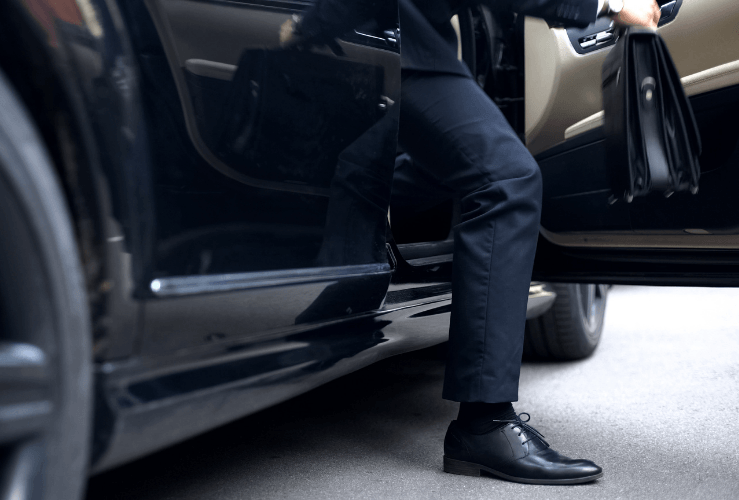
Enter and exit your car properly
As you get in your vehicle, face away from the seat, then sit and swivel your body into position.
Avoid twisting your back - since this increases the chance of pain.
Similarly, when getting out, face away from the seat and swivel yourself out. Use the door frame for support and/or for moving yourself into an easier exit position.
You might also consider fitting a mobility handle to help you get in and out more easily.
Adjust mirrors to reduce strain
Angle your mirror so little effort is needed to see what's behind you.
Make any required adjustments to your mirrors while sitting up straight - this will encourage good posture.
Buy a more suitable vehicle
There are a lot of tips on the best way to sit with lower back pain, but some issues are exacerbated by the car itself.
Some vehicles are better than others for minimising back pain.
If you do decide to replace your car, choose a model with power steering, cruise control, radar detection, large external mirrors, and last but not least, a design that makes it easy to enter and exit.
Choose a vehicle who's driving position is not too low or too high. Ideally, you want to be able to perch on the edge of the seat and swivel yourself in.
A quick search online for ‘best cars for sciatica/back pain’ should help reveal the most suitable vehicles.
Drive with care
Bumps and potholes can jar the spine. Apart from avoiding these as far as possible, you can reduce bounce by replacing old shock absorbers and tyres, and reducing tyre pressure slightly.
Take a heat or cold pack with you
Back pain sufferers differ when it comes to using heat or cold for pain relief.
Choose which kind of pack works for you and take it along.
For heat therapy, consider taking a hot water bottle. For cold, wrap an ice pack in a towel. Alternatively, you can purchase heat or cold packs inexpensively.
Visit your doctor
If you're suffering untreated back pain in general - or particularly when driving - consult your GP. They will be able to refer you to specialist care if required.
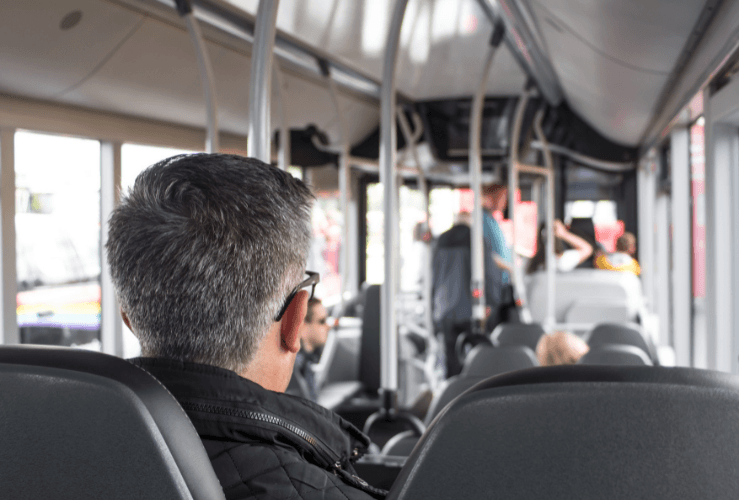
Take public transport
If driving aggravates back issues to an unbearable degree, you may consider ditching your car in favour of buses and trains.
Even then, you may wish to bring lower back support and a neck pillow to make your journeys as comfortable as possible.




